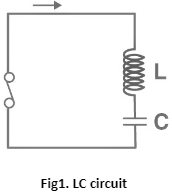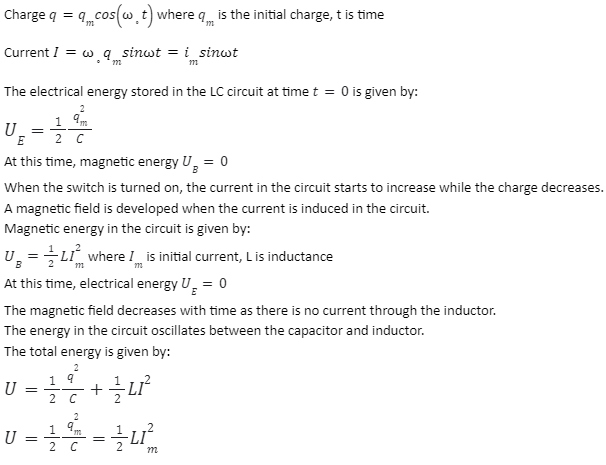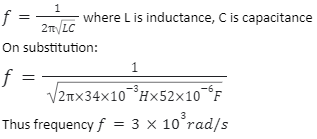Electrical oscillations of a definite frequency are generated whenever energy is supplied to an LC circuit. Such oscillations are called LC oscillations.
The LC circuit is an electromagnetic oscillator. It produces high frequency signals known as RF oscillators. This circuit is also known as an LC-tuned LC resonant or tank circuit. Oscillators are used in both transmitting and receiving paths. In LC oscillations, electrical and magnetic energy will keep on oscillating. In the LC circuit, the process of charging, discharging and charging takes place in cycles. The main function of an LC circuit is to fluctuate with minimum damping so that the resistance reduces.
What is LC oscillation?
When a charged capacitor is connected to an inductor, the electric current and the charge on the capacitor in the circuit undergo electrical oscillations called LC oscillations. It includes an inductor and capacitor connected in a series.
Consider the LC circuit given below.

In the above figure, L represents the inductor and C represents the capacitor. The energy taken from the battery and supplied to the capacitor keeps oscillating between L and C. The oscillations created between inductor L and capacitor C are called LC oscillations.
Principle Behind LC Oscilation
LC oscillations are generated due to the continuous energy flow from the capacitor to the inductor. In this, the capacitor undergoes charging, discharging, charging, etc. The capacitor starts charging the inductor while discharging itself when a charged capacitor is connected to a de-energized inductor. The inductor does the same when the capacitor is completely discharged. This creates a short current LC oscillation.
Working of LC Circuit
Suppose an AC voltage is passed through the capacitor, then it will charge in the beginning and then discharge again.
the frequency of LC oscillations is:

The continuous charging and discharging process takes place. The capacitor starts to discharge when it is completely charged. The charge is transferred to the inductor which is connected in series with the capacitor. Due to the change in the current, there will be change in the magnetic flux of the inductor. This creates an induced emf in the inductor.

The self-induced emf hampers the increase in current. When the capacitor is fully discharged, the energy of the capacitor is transferred to the inductor. Then the capacitor becomes completely discharged while the inductor stores the transferred energy.
Now the inductor initiates to charge the capacitor. Then the energy stored in the capacitor increases. This process takes place in cycles.
Qualitative Treatment

capacitance
Let q be the charge and I be the current. Both the charge and current vary sinusoidally with time. It is given by:

Applications of LC Oscillators
LC oscillators are used in various applications. They are:
- It is used in television broadcasting
- Used in filter circuits along with the RC circuit combination
- It has application in cell phone
- Used in transformers
- It is applied in defence communications
- Used in HV transmission systems for carrier line communication
- It has application in power capacitors
Conclusion
When a charged capacitor is connected to an inductor, the electric current and the charge on the capacitor in the circuit undergo electrical oscillations called LC oscillations. These oscillations are generated due to the continuous energy flow from the capacitor to the inductor. The total energy of

 Profile
Profile Settings
Settings Refer your friends
Refer your friends Sign out
Sign out







